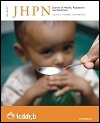Screening Utility, Local Perceptions, and Care-seeking for Reported Jaundeesh among Respondents Lacking Signs of Icterus in Rural Bangladesh
DOI:
https://doi.org/10.3329/jhpn.v31i3.16829Keywords:
Ethnography, Hepatitis, HEV, Jaundice, Medical anthropology, Morbidity, Traditional healers, BangladeshAbstract
In rural Bangladesh, acute viral hepatitis presents a significant burden on the public-health system. As part of the formative work for a large epidemiologic study of hepatitis E in rural Bangladesh, we sought to identify local terms that could be used for population-based screening of acute viral hepatitis. Exploration of the local term jaundeesh for screening utility identified a high burden of reported jaundeesh among individuals without symptoms of icterus. Recognizing that local perceptions of illness may differ from biomedical definitions of disease, we also sought to characterize the perceived aetiology, care-seeking patterns, diagnostic symptoms, and treatments for reported jaundeesh in the absence of icteric symptoms to inform future population-based studies on reported morbidities. We conducted a cross-sectional survey among 1,441 randomly-selected subjects to identify the prevalence of reported jaundeesh and to test the validity of this local term to detect signs of icterus. To characterize the perceived aetiology and care-seeking patterns for jaundeesh among the majority of respondents, we conducted in-depth interviews with 100 respondents who self-reported jaundeesh but lacked clinical signs of icterus. To describe diagnostic symptoms and treatments, in-depth interviews were also performed with 25 kabirajs or traditional faith healers commonly visited for jaundeesh. Of the 1,441 randomly-selected participants, one-fourth (n=361) reported jaundeesh, with only a third (n=122) reporting yellow eyes or skin, representative of icterus; Jaundeesh had a positive predictive value of 34% for detection of yellow eyes or skin. Anicteric patients with reported jaundeesh perceived their illnesses to result from humoral imbalances, most commonly treated by amulets, ritual handwashing, and bathing with herbal medicines. Jaundeesh patients primarily sought folk and spiritual remedies from informal care providers, with only 19% visiting allopathic care providers. Although the local term jaundeesh appeared to have limited epidemiologic utility to screen for acute symptomatic viral hepatitis, this term described a syndrome perceived to occur frequently in this population. Future population-based studies conducting surveillance for acute hepatitis should use caution in the use and interpretation of self-reported jaundeesh. Further study of jaundeesh may provide insight into the appropriate public-health response to this syndrome.
DOI: http://dx.doi.org/10.3329/jhpn.v31i3.16829
J HEALTH POPUL NUTR 2013 Sep; 31(3): 367-375
Downloads
242
211

